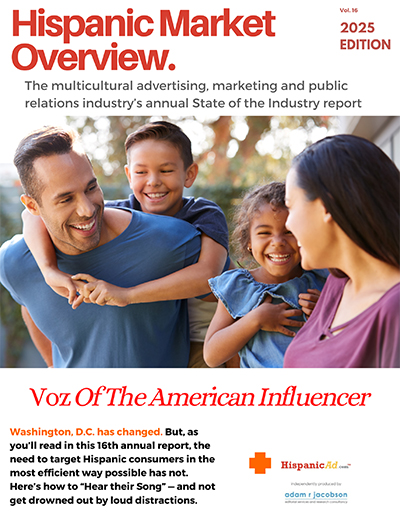Trends
From 2023 to 2024, the Hispanic or Latino population increased by 1.9 million; this gain was larger than the change for all other race and ethnicity groups combined.

The U.S. population age 65 and older rose by 3.1% (to 61.2 million) while the population under age 18 decreased by 0.2% (to 73.1 million) from 2023 to 2024, according to the Vintage 2024 Population Estimates released today by the U.S. Census Bureau.
Diversity, Equity and Inclusion 2025 CHAPTER TOOLKIT [REPORT]

In recent years, diversity, equity and inclusion (DEI) initiatives have faced challenges across various sectors, from corporate boardrooms and state legislatures to educational institutions and government agencies Amid debates over affirmative action and diversity metrics, the need for robust DEI policies remains critical These discussions underscore the complexities of integrating diverse perspectives and the ongoing necessity for constructive dialogue
POV: What the Pew LGBTQ+ Report Means for Inclusive Brands This Pride Month and Beyond

At SSG, our national study with Target 10, “From Blocked to Unlocked: Unlocking Growth Through Authentic LGBTQ+ and Ally Engagement*,” was conducted in 2024 with over 1,600 LGBTQ+ and ally respondents through both quantitative and qualitative research. The study found that 67% of LGBTQ+ individuals and 60% of allies are more likely to engage with advertising that reflects multiple aspects of their identity, including race, gender, and sexuality. Marketing does more than drive sales. It shapes perception, signals inclusion, and influences belonging.
The Experiences of LGBTQ Americans Today [REPORT]

June 26, 2025, marks 10 years since the Supreme Court ruled in Obergefell v. Hodges that the right to same-sex marriage is guaranteed across the United States. The decision, which represented a major change in U.S. family law, reflected shifting public opinion on same-sex marriage. In 2004, 31% of Americans supported it, while 60% opposed. By 2015, 55% supported same-sex marriage, while 39% opposed. And support has continued to grow: In 2023, 63% of Americans expressed support for same-sex marriage.
Beyond Trends: How Gen Z Spending Habits Are Reshaping the Market

Forget everything you thought you knew about consumer loyalty – Gen Z is rewriting the rules with every purchase. Recognizing this trend, many brands are now leveraging marketing-to-Gen-Z strategies to better connect with these digital natives. Born into an era of constant connectivity and social change, they hold unique expectations. They demand authenticity, transparency, and ethical practices from the brands they support. Unlike previous generations that trusted traditional advertisements and in-store experiences, Gen Z spending habits rely heavily on digital interactions and peer recommendations. This shift compels businesses to adopt holistic marketing strategies that integrate ethical stances, digital ecosystems, personalized engagement, and strong financial sensibility.
Language of the Heart: Code-Switching as Culture, Strategy, and Belonging

Language practices like code-switching, bilingualism, and Spanglish are completely intertwined with personal and collective identity among U.S. Hispanics; oftentimes, these linguistic practices are signals of belonging, adaptation, community building. By Alexa Ramos - B.A. in Literature, Media, and Culture Florida State University, Class of 2024 - M.S. in Applied American Politics and Policy Florida State University, Class of 2025
How Language Usage Influences Hispanic American Consumer Behavior

For most Hispanic Americans, language is a crucial marker of their identity. According to our research, “both the behavior and perceptions of consumers who speak more than one language might change depending on the language in which the interaction takes place”. By Hector Rodriguez & Sean Happel
Beyond Translation: How Language and the Sapir-Whorf Hypothesis Inform Hispanic Advertising

Language is a fundamental element in developing thought, identity, and behavior. Among U.S. Hispanic populations, language serves as a communication tool and a conduit of culture, memory, and emotional resonance. In this essay, I explore two language-related topics that are crucial to understanding Hispanic consumer behavior and marketing communication: (1) whether language influences how Latino consumers behave in the marketplace, and (2) the implications of the Sapir-Whorf hypothesis. By Madison Pellicer
Mainstream Media and the Spanish Language: Change, Representation, and Expression

The origin of the Spanish language in media dates back to 1598. The definition of “media” at the time was much narrower and included newspapers, manuscripts, and performing arts. It was at this time that conquistador Juan de Oñate’s men improvised a performance based on their adventures in New Mexico. This marked the first European-style live theater performance to take place north of the Rio Grande (Wilkinson, 2016). Since then, the media has always played a powerful role in the lives of Hispanics. By Meghan Bannister & Samantha Humphrys
The Growing Hispanic Market: From Workers to Consumers

Over time, the U.S. workforce has experienced a demographic evolution. The workforce has become a melting pot of people, just like the country itself. The workforce of the U.S. is comprised of more and more minorities, such as Hispanics. Furthermore, there is a positive association between the rise in Hispanic workers and Hispanic buying power (Korzenny, Chapa, Korzenny, 2025). This implication is one that marketers must be proactive in responding to. By Samantha Humphrys
Critical Essay on Hispanic Consumer Trends in the U.S.

Are Hispanic Brands Taking Over the Grocery Store Shelves? For this paper, I’ve chosen to focus my research on food brand marketing and the influence that the Hispanic population has had on this industry. By Sofia Martinez
¿Como se dice? bilingualism and how it has impacted advertising and the media

Many of us have been exposed to code-switching in the media from a very young age without realizing it. From cartoons teaching us basic survival Spanish on Nickelodeon to Netflix shows based on actual events, centering on a Colombian drug lord. There is an increasing number of cases in mainstream media that explore bilingual communication methods. Media is one of the building blocks of culture, and culture is a primary inspiration for advertising. Therefore, it is a natural progression for practices in the Hispanic marketing community to reflect the bilingual nature of the media. In this analysis, we will delve into the impact of code-switching on Hispanic audiences in both advertising and the media, as well as its influence on consumer behavior. By Piper G. Hadsell
Authenticity Is the Strategy. Culture Is the Stage.

What Bad Bunny’s Puerto Rico residency and World Tour teaches us about brand leadership and cultural relevance. By Jacquelynn Carrera - Director Brand Marketing - Network Audio & Live Entertainment
Neuroresearch and Online Eye Tracking: Redefining Digital Ad Effectiveness

In a digital environment where attention spans are measured in seconds, traditional metrics like clicks and views offer an incomplete picture. They tell us what users did but not what they saw, felt, or understood. Which parts of the creative actually registered with them? Did the ad spark interest, confusion, or indifference?
The HMC 2025 Hispanic Market Guide challenges marketers to follow the growth and prioritize cultural COMPETENCY for brand success [DOWNLOAD for FREE]

The Hispanic Marketing Council (HMC) has released its highly anticipated 2025 Hispanic Market Guide as a roadmap to help marketers effectively and authentically connect with the top U.S. growth market: Latinos. The guide features business-building cultural insights, economic and sector data plus reports on media consumption, purchase behavior and Hispanic creativity.
2025 Hispanic TV Programming Report – DOWNLOAD for FREE

HispanicAd in association with Adam R Jacobson are proud to announce the availability of the 2025 Hispanic TV Programming Report for our readers. Enjoy
2025 Hispanic Market Overview Report – DOWNLOAD for FREE

HispanicAd in association with Adam R Jacobson are proud to announce the availability of the 2025 Hispanic Market Overview – titled “VOZ of The American Influencer”
Differences in Work Arrangements Among Hispanic and Non-Hispanic Populations

Hispanic or Latino workers are projected to become a larger portion of the civilian labor force in the coming decade and new American Community Survey (ACS) tables on characteristics of workers show how they differ from workers in other groups.
Burnout Is On the Rise: The Consequences and Ways to Prevent It

A growing concern for employees and employers is burnout. Talent solutions and business consulting firm Robert Half found with its new research that 36 percent of professionals feel burned out at work, and 33 percent report they are more burned out now than the previous year. Among those who reported feeling burnt out, those who reported the highest levels of burnout are gen Z (39 percent) and millennials (40 percent).
What Brands Must Know About U.S. Fans Ahead of the 2026 FIFA World Cup

The largest sporting event in history, the 2026 FIFA Men's World Cup, kicks off across North America. For brands, it's a once-in-a-generation chance to build campaigns that authentically tap into the unique appeal of World Cup soccer and break into mainstream culture during a tournament projected to generate up to $40.9 billion in GDP.






























